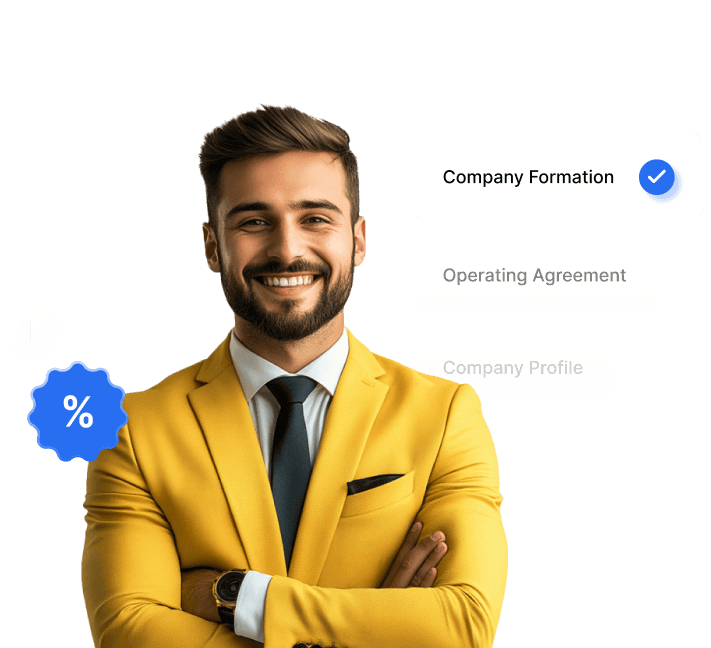Language:
Business Assets: Everything You Need to Know

Business assets are a crucial component of any successful enterprise, as they serve as valuable resources that companies use to drive growth, create value, and sustain their operations. From tangible assets such as land, buildings, equipment, and inventory to intangible assets like patents, trademarks, brand equity, and intellectual capital. The effective management and utilization of these resources can largely determine the financial health and competitive positioning of an organization in the market. This guide will delve into business assets and all you need to know.
What Are Business Assets
Business assets are things that a business owns that have value and can be used to generate income or help the business operate. These can include physical assets like property, equipment, and inventory, as well as intangible assets like patents, trademarks, and goodwill.
For example, a bakery might have physical assets such as ovens, baking tools, and display cases, as well as inventory like flour, sugar, and pastries. They might also have intangible assets like a loyal customer base, a recognizable brand name, and unique recipes that set them apart from competitors.
Having valuable business assets is important because they can be used to generate revenue and increase the value of the business overall. They can also be used as collateral for loans or as a bargaining chip in negotiations with other companies. Proper management and maintenance of business assets can help a business grow and succeed in the long run.
How Business Assets Work
Business assets play a crucial role in generating income and ensuring the stability and growth of the business in the long run. You can think of them as the building blocks that enable a business to operate, create products or services, and make a profit.
There are different types of assets a company can possess. These may include tangible assets like land, vehicles, machinery, and stocks or even intangible assets such as copyrights, franchises, and even software. The combination of these assets is what enables a business to function day-to-day and deliver value to customers.
For instance, a coffee shop would rely on assets such as coffee makers, espresso machines, tables, chairs, and raw materials like coffee beans and milk to serve their customers. In this case, each asset plays a vital role in making the business operational and profitable. Similarly, a tech company may have computers, servers, as well as intellectual property, like software codes and patents, which help the company develop and sell innovative technology products, thus generating income.
3 Classifications of Assets
Classifications of assets can be divided into three main categories: Convertibility, Physical Existence, and Usage.
Convertibility: Current Assets Vs. Non-Current Assets
Convertibility refers to the speed at which an asset is converted into cash or other liquid assets. There are two categories: current assets and non-current assets.
Current assets are those that can be easily converted into cash or cash equivalents within a short period, typically a year or less. They play a significant role in fulfilling short-term financial obligations and maintaining liquidity. Examples of current assets include cash, accounts receivables, inventory, and short-term investments.
Non-current assets, on the other hand, cannot be readily converted into cash and are expected to provide long-term economic benefits. They often have a useful life that extends beyond one year and requires a considerable investment. Examples of non-current assets include property, plant and equipment, long-term investments, and intangible assets like patents and copyrights.
Physical Existence: Tangible Assets vs Intangible Assets
Physical Existence breaks down assets into two further categories; tangible assets and intangible assets. Tangible assets are physical assets that have a measurable value, such as buildings, furniture, and securities. Intangible assets lack physical form but still hold monetary value; these include trademarks, copyrights, and brand recognition.
Usage: Operating Assets vs Non-Operating Assets
Usage defines two types of assets; operating assets and non-operating assets. Operating assets are essential for the day-to-day functioning of a business and for generating revenue. They are directly involved in the production and provision of goods and services. Examples of operating assets include machinery, inventory, and accounts receivable. Non-operating assets, on the other hand, are assets that are not necessary for the primary operations of a company but can still generate income or facilitate financial transactions. Examples of non-operating assets include investment properties or securities, idle machinery, or non-strategic subsidiaries.
Valuing Business Assets
Valuing business assets is a crucial aspect of corporate finance that helps determine the financial health and overall value of a company. The process involves quantifying the worth of a firm’s tangible and intangible assets, including its real estate, intellectual property, equipment, inventory, and more. By appraising and analyzing these elements accurately, businesses can make strategic decisions, attract investors, and secure loans, among other benefits.
Several methodologies are commonly used in the valuation of business assets. These approaches take into account various factors, such as age, condition, and potential for future growth. Some widely recognized valuation techniques include:
1. Book Value Method – This method calculates the value of business assets based on their recorded cost minus accumulated depreciation. The book value approach is relatively straightforward and often used in financial reporting. However, it may not accurately reflect the current market value of an asset.
2. Market Value Method – This method involves comparing a business’s assets against similar assets that are currently available for purchase in the market. The market value approach is useful for tangible assets like real estate and machinery, assuming an active market and comparable assets exist.
3. Income Value Method – The income value method values assets based on their potential to generate future income. This approach requires financial projections and discount rates to estimate the present value of projected cash flows. The income value method is particularly useful for valuing intangible assets like patents, copyrights, and trademarks, which directly contribute to future revenue generation.
4. Replacement Cost Valuation – This method appraises business assets based on the cost of replacing them with new or equivalent assets. Highly specialized equipment or customized technology may warrant a replacement cost valuation to provide a more accurate reflection of current value.
5. Liquidation Value Method – This method calculates the value of business assets on the presumption that they are sold off rapidly during a distressed sale. Liquidation value is generally lower than market value, as it assumes a time constraint for asset disposal. It is often used in bankruptcy proceedings or when a company is winding down its operations.
Amortization of Business Assets
Amortization of business assets refers to the way a business accounts for the decrease in the value of its long-term assets over time. This is important because assets like buildings, equipment, and patents lose their value as they age or become obsolete, and it’s essential to accurately reflect this decrease in value on a company’s financial statements.
Amortization is a method of spreading the cost of an asset over its useful life, rather than recording the full cost of the asset in the year it was purchased. This is similar to how you might pay off a loan over time, with each payment going toward both the principal and the interest.
For example, if a business buys a machine for $10,000 and expects it to last for 5 years, it would amortize the cost of the machine over those 5 years. This means that each year, the business would record $2,000 in depreciation expense on its income statement, reflecting the decrease in the value of the machine over time.
By spreading the cost of an asset over its useful life, amortization allows a business to more accurately reflect its financial position and profitability. It also ensures that the value of the company’s assets on its balance sheet more closely matches its true market value, as the decrease in value over time is accounted for.
Depreciation of Business Assets
Depreciation of business assets is a way that a business accounts for the decrease in value of its long-term assets over time. Assets such as equipment, vehicles, buildings, and machinery lose their value as they age and experience wear and tear. It’s important for a business to accurately reflect this decrease in value on its financial statements.
Depreciation is a method of spreading the cost of an asset over its useful life, rather than recording the full cost of the asset in the year it was purchased. This is similar to how you might spread the cost of a big purchase, like a car, over several years, instead of paying for it all at once.
For example, if a business buys a delivery truck for $50,000 and expects it to last for 5 years, it would depreciate the cost of the truck over those 5 years. This means that each year, the business would record $10,000 in depreciation expense on its income statement, reflecting the decrease in the value of the truck over time.
Tax and Business Assets
Businesses must pay taxes on all of their assets when they are sold or transferred. For example, if a business sells a building, it must pay capital gains tax on the difference between the original purchase price and the sale price. Similarly, businesses must also pay taxes on certain intangible assets when they are sold or transferred. In some cases, businesses may be able to claim deductions for certain types of asset transfers or sales depending on local laws.
Taxes also apply to business expenses related to various types of asset purchases or improvements made over time. For example, businesses may be able to deduct the cost of repairs made on valuable tangible property from their taxable income. Additionally, businesses may be eligible for depreciation deductions for certain types of tangible property subject to depreciation rules specified by the Internal Revenue Service (IRS). These deductions allow businesses to spread out their taxable income over multiple years instead of paying all at once in one year.
Understanding how taxes affect business assets is an integral part of any financial strategy for success in today’s competitive landscape. Taking advantage of available deductions and credits for asset purchases and improvements can help any business maximize its profit potential while minimizing its tax burden in the long run.
Efficient Asset Management Made Easy With doola
To recap, business assets are the resources and properties that a company owns and uses to generate income. These can range from physical assets such as real estate and equipment, to intangible assets such as patents and trademarks. Proper management and tracking of these assets are critical to the success of any business.
That’s where doola comes in. With their comprehensive asset tracking system, businesses can monitor their assets’ depreciation and value, as well as generate reports for financial analysis. Don’t let asset management become a burden for your company.
FAQs
What are common business assets?
Business assets are essential resources that a company utilizes to enhance its overall value, generate revenue, and maintain a competitive edge. Common business assets include tangible and intangible resources. Tangible assets, such as property, equipment, and vehicles, have a physical presence and can be touched or seen. Intangible assets, such as patents, copyrights, and brand reputation, are non-physical resources that contribute to a company’s future success.
Do all businesses have assets?
Yes, all businesses have assets, as assets are fundamental to a company’s ability to operate and generate revenue. The nature, value, and complexity of these assets may vary significantly depending on the type of business, its size, and the industry in which it operates.
What is not a business asset?
A business asset is any resource owned by a company that holds economic value or potential for future benefits. Therefore, items or elements that do not contribute to a company’s value or ability to generate revenue are not considered business assets. Examples of items that are not business assets include personal expenses, individual employee-owned tools, and funds utilized for non-business purposes.




